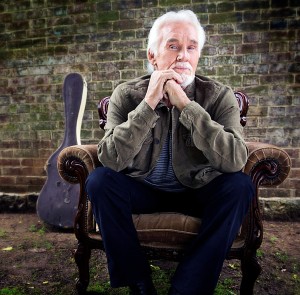 I feel kind of bad now that I pressed Kenny Rogers a few years back on whether a tour he was calling “The Gambler’s Last Deal: Final World Tour” would actually be his last.
I feel kind of bad now that I pressed Kenny Rogers a few years back on whether a tour he was calling “The Gambler’s Last Deal: Final World Tour” would actually be his last.
Similar ventures by, say, Kiss, Cher and the Who over the past few years had not resulted in actual farewells.
When Rogers died Saturday at 82, I realized he knew more about his own intent than a reporter trying to get him to say he knew when to fold em.’
“If I don’t do it now, I may not be around for a farewell tour,” Rogers told me for the 2016 article in The Washington Post. “I really want to do this. I want to go to all the places I’ve been before and say thank you and do a final show and have some fun with it.”
Of those other farewell tours, he said “look how young they are. They don’t come close to me. I am my age and I know it…I just hope I’ll be able to finish the tour.”
Recapping his entire career on stage meant jumping genres, from jazz with the Bobby Doyle Three, to folk with the New Christy Minstrels, to psychedelic rock with the First Edition, whose enduring hit “Just Dropped In (To See What Condition My Condition Is In)” was used in both the dream sequence of the 1998 cult classic “The Big Lebowski” and a season of “Fargo.”
“A lot of this stuff I’ve kind of forgotten about,” he said, “so it’s good for me to go back and relive it, too.”
But for all the different approaches he had, once he hit big in 1977 with “Lucille,” which sold 5 million copies and brought him to the top of the country charts and then pop’s Top 5 — still a rare thing — he knew he had a home for his sound.
“ ‘Lucille’ was really the game changer for me,” he said.
But country seemed a natural place to settle.
“My mom used to listen to country music all the time,” Rogers said. “I’d be getting up and going to school and she’d have a big pitcher of ice tea on the ironing board, doing the ironing and listening to Hank Williams and Lefty Frizzell and those guys. So I think it was kind of embedded in me.”
Still, he said, “my influences at first were more jazz — music of the ’30s and ’40s. And then I got around to doing different kinds of music I was influenced by. I was with the New Christy Minstrels, and I learned the value of doing a story song that had social significance. Like, ‘Reuben James’ was about a black man who raised a white child. ‘Ruby, Don’t Take Your Love to Town’ is about a Vietnam War vet. ‘Coward of the County’ was about a rape. I tend to like to sing about things rather than just words.”
And then there were his love songs, for which he had a specific goal.
“I’d say, ‘I want to do ballads that say what every man would like to say and every woman would want to hear,’ ” Rogers said. “And if you look at ‘She Believes in Me,’ ‘You Decorated My Life,’ ‘Through the Years,’ ‘Lady’ — they are the things that every man would like to say and every woman would like to hear. And the reason I did that was then you had both audiences: You had the male and female audiences.”
“Lady,” in particular, brought Rogers together with Lionel Richie to build a rare bridge between smooth R&B and country balladry.
“I had always loved his work with the Commodores,” Rogers says. “And I called him and I said, ‘I’d like you to write me a song.’ He said, ‘I don’t think I have time.’ And I said, ‘Well, I’m going to put it on “The Greatest Hits” album and it will probably sell 5 or 6 million copies.’ And he said, ‘How’s Sunday night at 8:30?’ ”
That collaboration was Rogers’s first No. 1 song on the pop charts, but also his 10th No. 1 country hit.
His only other No. 1 pop song was 1983’s “Islands in the Stream,” a Bee Gees-written tune intended for Marvin Gaye but retooled as a duet for Rogers and Dolly Parton.
“That was a totally different place for me to be,” Rogers says of that hit, part of an entire album produced by Barry Gibb.
By 1985, Rogers shared Richie’s manager, Ken Kragen, who also organized the “We Are the World” recording session in 1985. On it, Rogers’s voice is heard fourth, right after Richie, Stevie Wonder and Paul Simon.
“That was a great gift,” Rogers says. “It was a wonderful bunch of people, and it was a great idea and a great song. Michael Jackson wrote that with Lionel, so I felt right at home, melodically and musically.”
Among the many other writers for Rogers: Prince.
“I knew some friends who knew him. I never met him,” Rogers says. “But I said, just jokingly, ask him to write me a song. And he wrote me this song called ‘You’re My Love.’ ”
It ended up on Rogers’s 1986 album “They Don’t Make Them Like They Used To.”
“I listened to it again the other day,” Rogers says. “It’s a beautiful song, and it’s so typical of him. There’s a lot of great melodies, great harmonies, great background parts.”
 Selling more than 100 million recordings made Rogers recognizable all over the world, but in Asia he was famous for a different reason — through a flourishing line of Kenny Rogers Roasters restaurants.
Selling more than 100 million recordings made Rogers recognizable all over the world, but in Asia he was famous for a different reason — through a flourishing line of Kenny Rogers Roasters restaurants.
“I go over there and walk in,” he said, “and somebody will recognize me from looking at the cups.”
It was Rogers intent to film his farewell tour.
“I’m going to ask them not to play it until after I die,” he said. He, for one, didn’t want to see it. “I look too old now. I don’t mind being old; I hate looking old.”